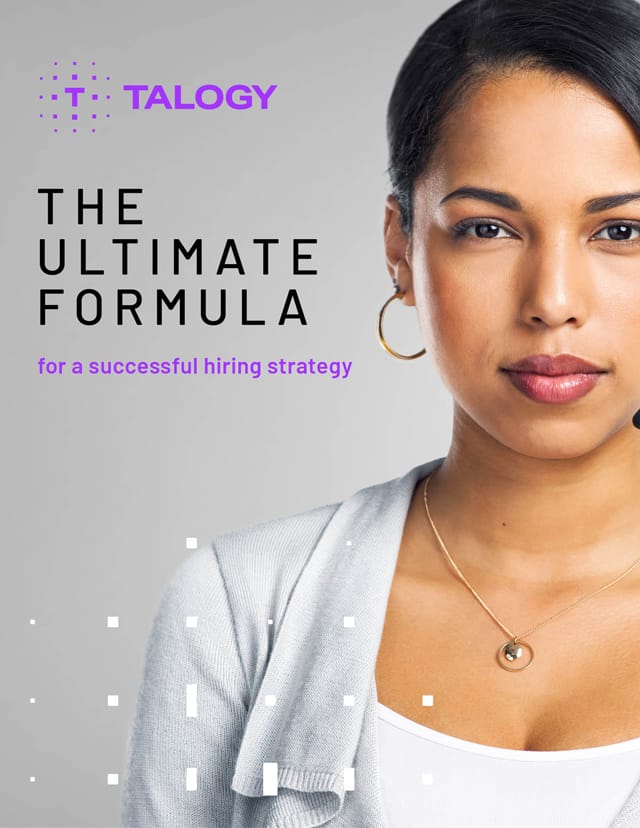Written by Ted Kinney Ph.D., VP of Research and Development
Let me just come out and say it: the current labor conditions are less than ideal. Finding enough candidates to fill your openings is hard! Building a ‘pipeline’ of qualified candidates seems like an unreachable dream. This lack of talent availability can be disheartening to say the least. But before you let feelings of despair creep in, let me provide a ray of hope – things will get better. Having worked with organizations on their selection processes for over 20 years, I have ‘ridden out’ many markets from favorable to unfavorable talent availability conditions.
Still, when you are living through a talent shortage, hearing that it will change at some point doesn’t help, and it doesn’t change the fact that you need to fill slots right now. There is a saying that “desperate times call for desperate measures,” but I urge you not to take a hacksaw to your current selection process. While I do advocate for adjusting processes for the shifting market conditions, let me make the case for why you shouldn’t remove your hiring assessments – or any proven and valuable steps from your process.
What do candidates truly think about hiring assessments?
In times like these, we often hear concerns that candidates do not want to take assessments or will drop out of them after they start. But do candidates really disengage because you are using a test? The data actually suggest that candidates react favorably to tests and rarely drop out of a well-developed and interesting assessment once they have started it. In fact, candidates expect you to evaluate them; heck, they want to be evaluated! They want to show you why they are the right person to hire.
What message would this send to candidates and current employees?
When you remove large components of your selection process, the word gets out that you will hire anyone who applies. What message does a ‘hire anyone’ strategy send to your top candidates and incumbent workforce? Most workers want you to hire good people to stand beside them. They don’t want unreliable, unsafe, uncommitted coworkers. Over time, a ‘hire anyone’ approach will erode the quality of candidates that are attracted to your organization. The people who can’t get jobs anywhere else will come knocking at your door, and the people with options will not. I have seen this happen…when clients act too drastically for the short-term pressure, it brings them costly turnover and retention problems later when the labor market adjusts.
What happens when your incoming applications increase?
It is also important to think carefully about how responsive you can be as the labor market does begin to shift. If you remove an assessment and candidates start applying again, what are you going to do when all of a sudden you have more candidates than positions? What will you use to make the decision of who to hire? You will hit that point – and probably sooner than you think. Can you ensure consistent decision criteria (e.g., every candidate is evaluated the exact same way)? Will your decisions be job-related and fair? And how will you document this? Removing your assessment makes this harder. And even worse, if the decision criteria you end up using creates an adverse impact against members of a protected class, how will you defend your decision strategy given that you did actually have a MORE valid and LESS adverse alternative available?
What else would be impacted during the selection and onboarding process?
An assessment does more for you than just make the selection decision. It communicates your values, it creates investment in the process, and it lays the groundwork for how much your organization cares about talent. In a lot of cases, I do think you should adjust your cut scores in times like these, but it is almost always best to keep the assessment in place. Doing so still impacts turnover, organizational commitment, and job satisfaction – for both those who you hire and those who are impacted by your hiring decisions. The rigor of completing the hiring process weeds out those who are uncommitted and unreliable. For a candidate, receiving a job offer creates a sense of pride and accomplishment and a feeling of closeness to the organization they are applying to like they had to earn it. Short circuiting these processes makes it harder to build commitment and sets back that employee’s onboarding.
Again, times really are tough – low unemployment rates and lingering pandemic effects make the current lack of talent availability really hard to manage through. The key is not to throw the baby out with the bath water, but rather to remember that assessments provide an important piece in not only selecting candidates, but also in attracting and retaining them. Dropping your assessment may seem like a logical intervention, but our experience and data show that it often can have the opposite effect.
Rather than taking such drastic steps – which are certain to lead to negative outcomes – there are other things you can do:
- Revisit your cut scores and decision criteria.
- Manage your process steps so that the pass rates at each stage yield the number you need at the bottom of your hiring funnel.
- Work closely with your expert consultants to adjust the process with the market conditions.
- Perhaps the most important thing is to focus on improving communication about the process with your candidates – what it involves, how long it will take, and what to expect. Candidates don’t mind going through your process, they just want to know what to expect and plan for it.
These are practical steps I recommend exploring that further the nearly endless list of reasons why you shouldn’t remove your hiring assessment. In the end, the key takeaway is this: removing good tools from your process will have further reaching impact than you might intend. And it has always been my experience that the cost of a bad hire is much higher than the cost of a vacancy in the long run.




